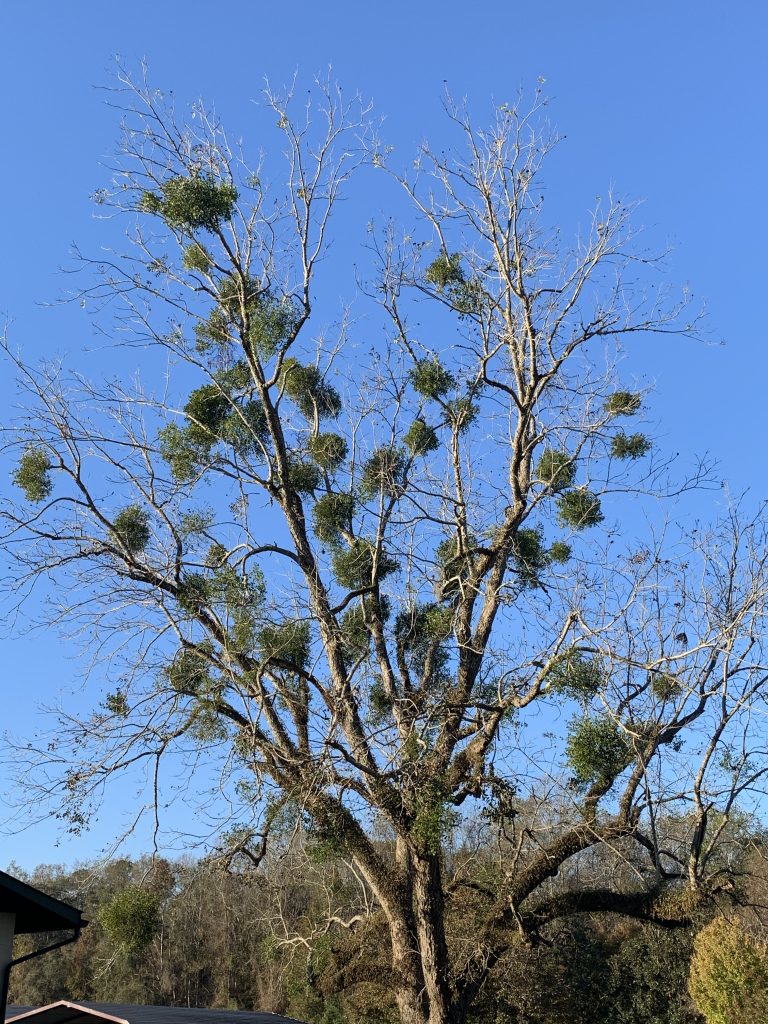A kiss under the mistletoe…a timeless holiday tradition that we’ve all heard of. If you look around, you’ll be sure to find some growing on the branches of several different species of hardwood trees throughout the Panhandle. This same mistletoe is often harvested and brought inside to add a festive touch to holiday decorations.
The species we have here is known as American or oak mistletoe. It only grows in deciduous trees that shed their leaves annually. While mistletoe has over 200 host plants, you’ll find it most commonly in oaks, maples, and pecans. Look for a green, ball shaped mass about 3’ wide in the tops of trees. Each mass is an individual mistletoe plant, and some trees may have a few or many.
Mistletoe is a small, evergreen shrub with white berries. It is considered a hemi-parasitic plant because it can produce some of its own food through photosynthesis, but it also relies on its host tree for water and nutrients. Most healthy trees can tolerate mistletoe without suffering any significant harm. However, trees that become severely infested with mistletoe can become weakened and decline in health, especially if the tree is already stressed by pests, drought or disease.
If you have mistletoe growing on trees in your yard, the best way to support the trees is to maintain their overall health through proper watering, fertilization and pest management. If you suspect trees on your property are suffering from mistletoe, you can prune the infected branches. Since mistletoe roots from its host tree, simply cutting it flush with the branch will not kill it. You can remove the roots by pruning at least six inches below the point of attachment.
While some may consider mistletoe to be a nuisance, it does provide ecological benefits. Mistletoe serves as a valuable resource to our wildlife, primarily birds and insects. Oak mistletoe is the only food source for the larvae of the great purple hairstreak butterfly.
If you are considering harvesting mistletoe this winter to use for decoration, be sure to place it carefully. Mistletoe berries and all parts of the plant are poisonous to humans so keep plants and decorations out of the reach of children and pets. For more information on mistletoe, contact your local UF/IFAS Extension Office.
- Mistletoe – Solutions for Your Life – University of Florida, Institute of Food and Agricultural Sciences – UF/IFAS
- Mistletoe – Wisconsin Horticulture
- 2025 Peanut Butter Challenge! - October 3, 2025
- Discover the Sweet Potential of Persimmons at the UF/IFAS Persimmon Field Day - August 28, 2025
- Black-eyed Susans Bring Bold Color and Easy Care - July 20, 2025



